How to clean a pond without draining it: 5 simple steps for a quick refresh
Follow our tips on how to clean a pond and you'll be rewarded with sparkling clear water and less algae
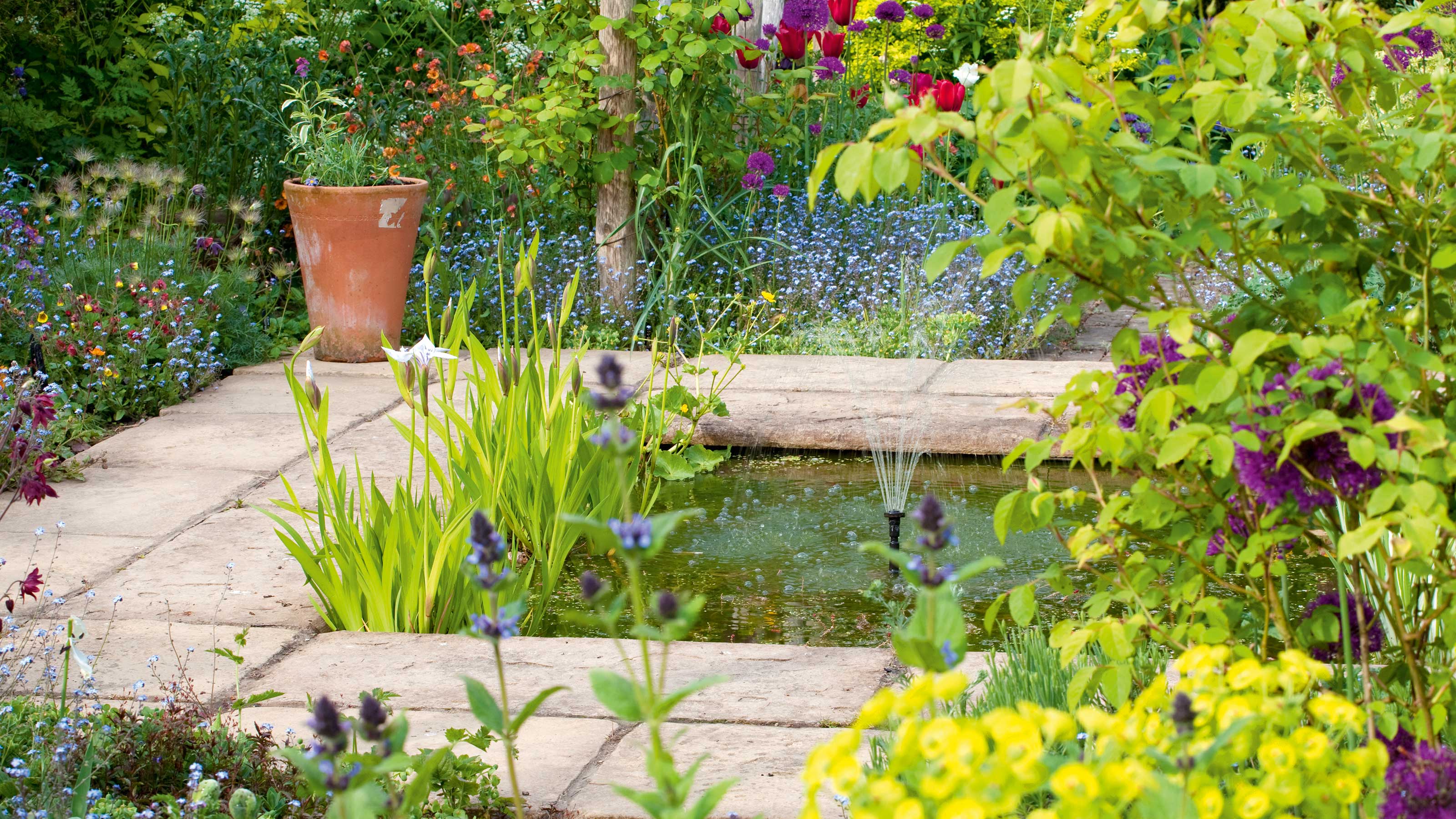

Is your pond looking a little worse-for-wear? Then you need our tips on how to clean a pond – it's likely to be easier than you think.
You might assume that cleaning a pond requires draining out all the water first, for easy access to the sludge beneath. But, this isn't normally necessary – in fact, it's generally beneficial to keep the old water in – a relief for those of us who are short on time for garden chores. Instead, there are plenty of quick ways to clear out the bad stuff without disturbing fish, aquatic plants, and all the good bacteria that helps to maintain a healthy ecosystem.
We've rounded up all the straightforward ways to tackle cleaning your pond below. Follow these steps and before long, it will be looking as good as new. And if you're on the lookout for design inspo, you'll find plenty in our garden pond ideas feature.
How to clean a pond without draining it: five easy steps
Learning how to clean a pond is easy-peasy but will reward you with a better-looking feature and a healthier environment for any inhabiting fish.
1. Clear debris from the surface
Ponds can be a bit of a magnet for fallen leaves, twigs, and other bits of debris, especially as summer turns to fall. Keep an eye on your pond and fish out any bits floating on the top as frequently as you can, before they sink and turn to sludge. This can be done with a simple pond net.
If you want to go a step further and cut down on maintenance, you can invest in a pond skimmer. There are all kinds of designs – from small, pump-powered models that can be dropped into the pond as and when needed, to built-in designs that are either submerged at the bottom of the pond or attached to the side of your pond liner. If you go for this approach, be sure to check that your chosen product is suitable for any fish you might have.
Looking for more quick and easy backyard tips? Our guide on low maintenance garden ideas is full of advice.
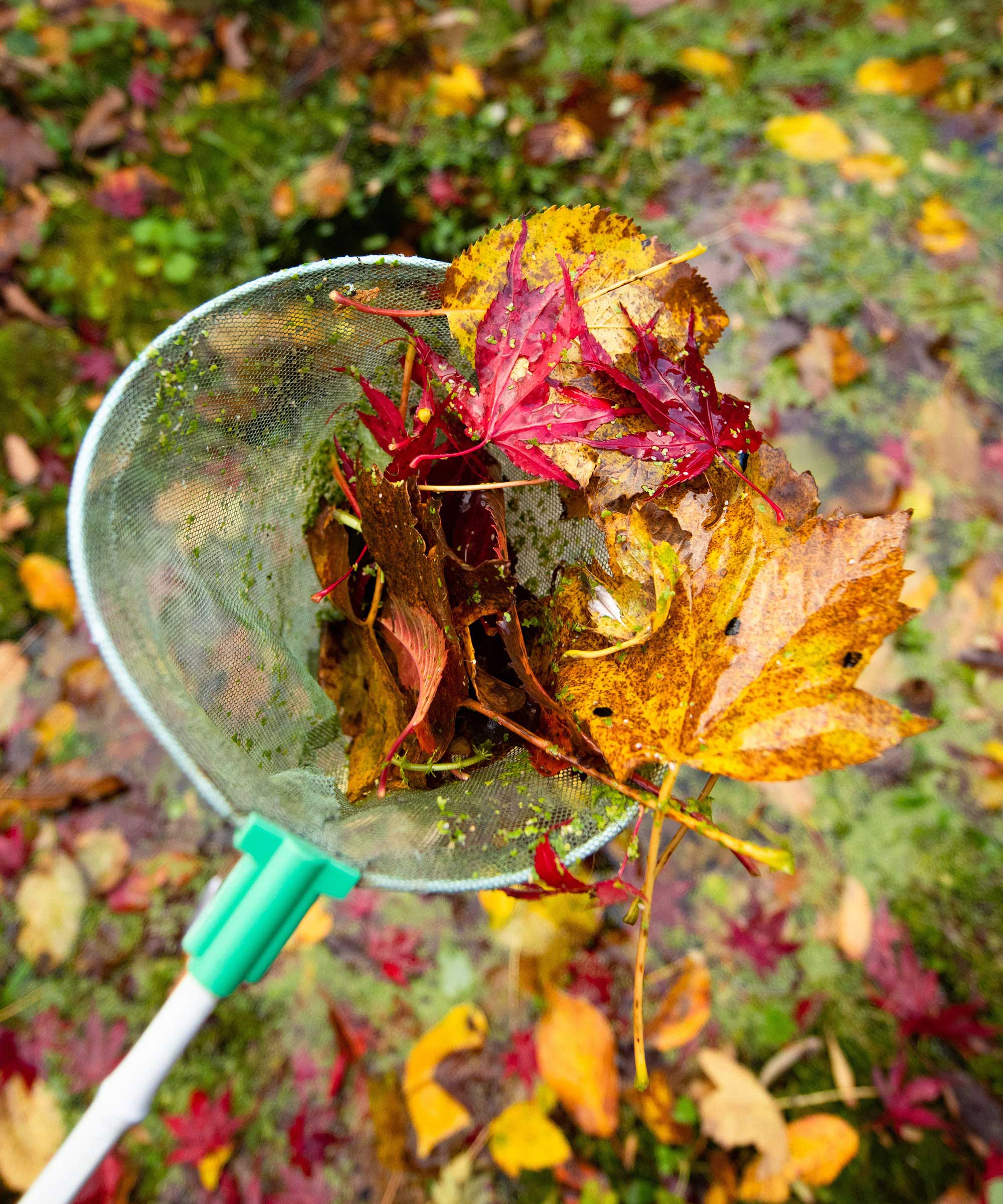
A net can be used to scoop fallen leaves from your pond
2. Vacuum the liner
Once you've cleared up the surface of your pond, the next job is to address that sludgy stuff at the bottom and sides. After all, too much of this can be harmful to fish. But don't worry, there's no need to grab a pair of rubber gloves and a scrubbing brush. Instead, you'll want to use a special pond vacuum, which is much less labor-intensive than doing it by hand.
If you've seen our guide on pool maintenance, you'll know that you can get pool vacuums too, and the process for ponds is more or less the same. You'll use a pole (a telescopic one for deep ponds) with the vacuum head secured to the end, and gently move it around the pond liner to collect up all the accumulated debris. There are lots of different models, so look for one that is powerful enough for the size of your pond.
According to Maidenhead Aquatics, you don't even need to remove any fish before doing so as they will instinctively move out of the way. But it's important to avoid vacuuming in summer when frogs and insects are reproducing. In fact, as Pond Academy points out, if your pond is purposefully for wildlife you might want to keep some of the sludge. It 'provides nutrients to plants and food for microorganisms and insects,' they say.
- Looking for more wildlife garden ideas for your plot? You can find plenty in our guide.
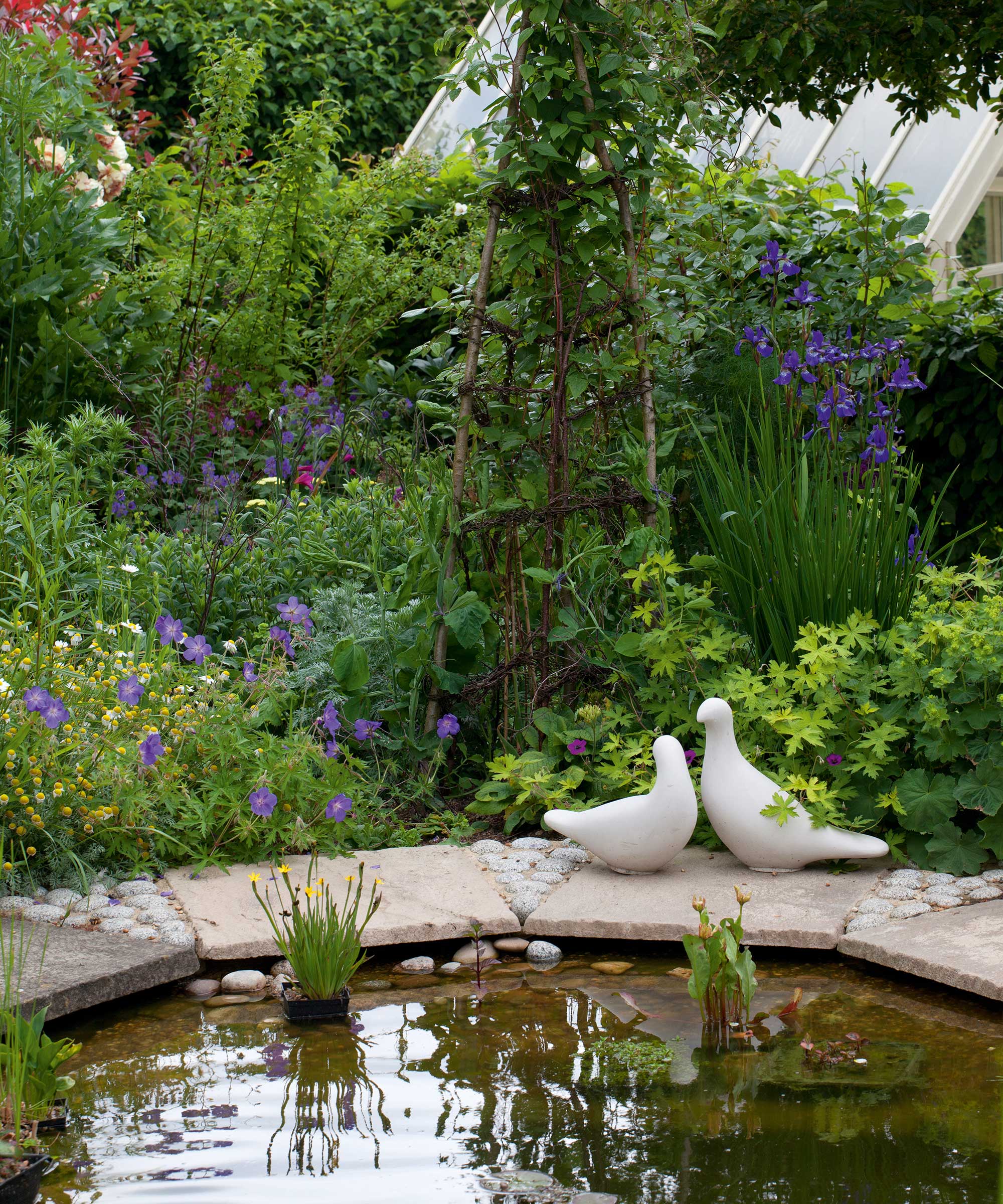
Keep your pond looking its best by learning how to clean it
3. Check the filter
To clean a pond properly, you'll also want to check the filter to ensure it's not clogged. However, it's best to wait a couple of weeks after vacuuming your pond before you do this. The reason, as Maidenhead Aquatic explains, is that vacuuming will reduce the level of good bacteria from your pond, so waiting a while before you potentially remove more gives it a chance to replenish.
They also suggest to only use water from the pond itself to wipe it down, rather than tap water, to maintain the beneficial bacteria. Check your filter's manufacturing instructions for specific directions on how to do it, as models can differ.
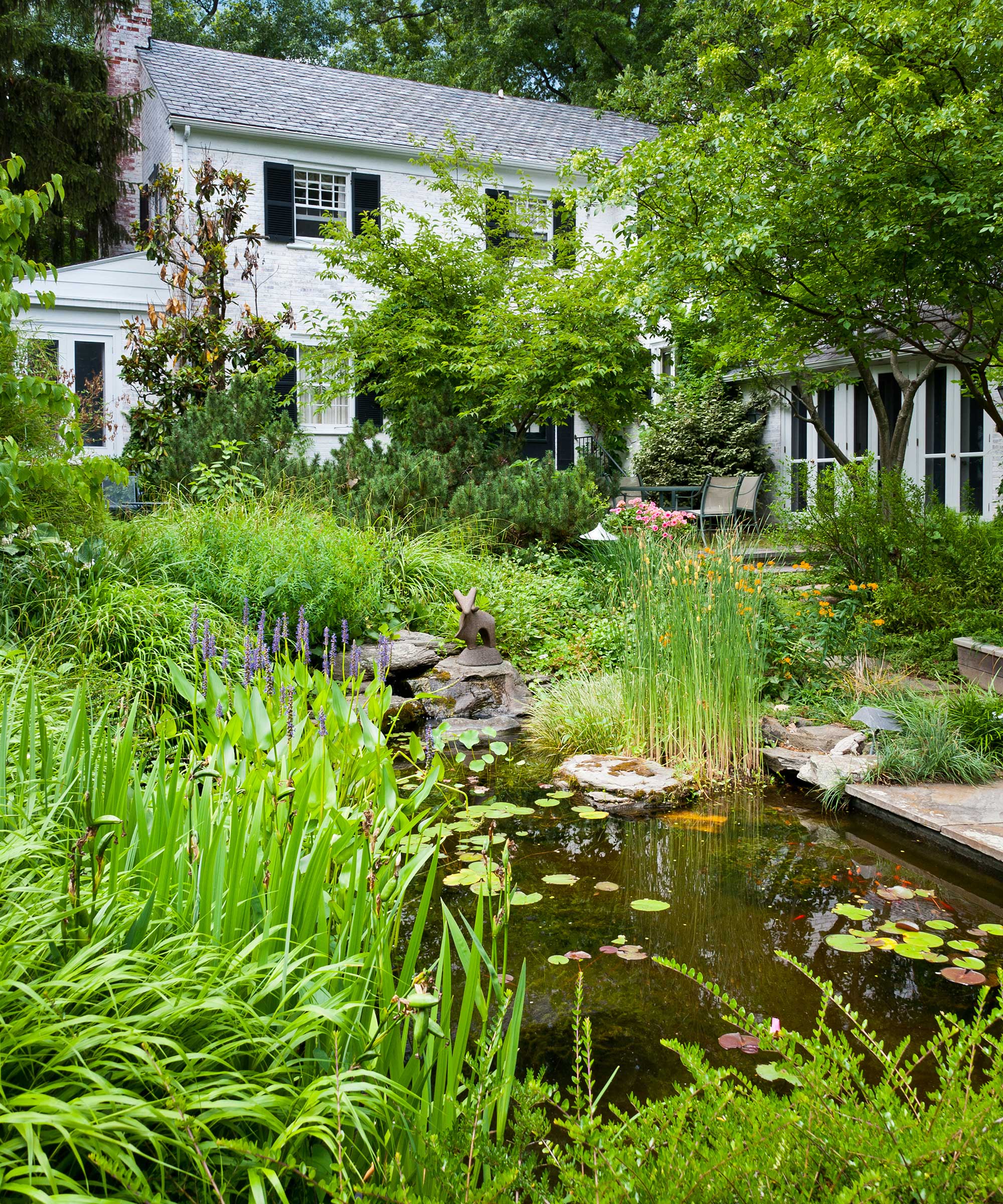
A clean filter will keep your pond water fresher for longer
4. Add a supplement
Speaking of beneficial bacteria, you can actually buy supplements that are made of just that. When added to a pond, they help to break down organic matter and waste. And doing so can give your pond a useful boost after a deeper clean when some of the naturally occurring good stuff will have been lost.
In fact, for wildlife ponds that don't have fish, you may wish to skip the vacuuming step altogether and just opt for this instead.
- Don't have the space for a pond? Our water feature ideas are full of alternative solutions.
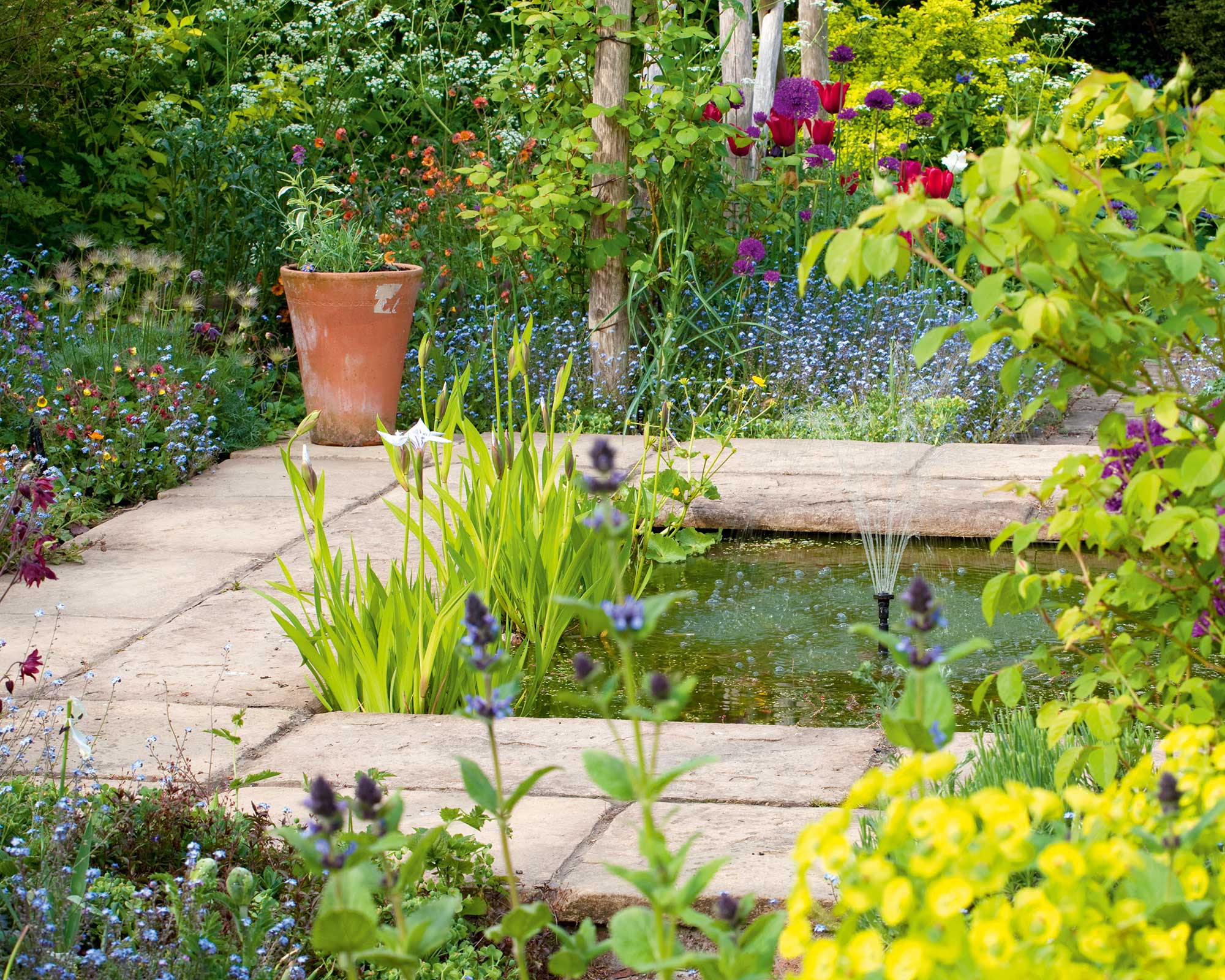
Give your garden pond a boost with a supplement
5. Reduce the algae levels
Even with small garden ponds, algae is inevitable. And whilst a little bit is helpful (for instance, for sheltering fish from predators) it's important to keep levels under control. Too much can reduce the oxygen levels in your pond and discolor the water.
Positioning your pond in a partially shady spot will help to slow down the algae growth, as will adding some of the best pond plants, which will compete for nutrients.
The RHS also explains how all types of pond algae can sometimes be discouraged by floating a mesh bag of barley straw on the pond – 1.5 oz per sq yd (about 50g of straw per sq m) of water surface area is ideal. 'Add the straw in spring and remove it when it has turned black (usually about six months later),' they say. Lavender can be added to the barley straw for additional effectiveness.
You can also use a UV pond clarifier, which destroys green algae at a cellular level. Some pond-owners also choose to dye their water black (using a specifically designed pond product), which, as the RHS explains, reflects UV rays away from the surface of the pond so that algae cannot photosynthesize. It also creates an intriguing, mirrored effect – perfect if you're on the lookout for modern garden ideas.
Finally, you can twirl out large amounts of algae using a stick, they add. But, be mindful of any wildlife which may be living in it. 'Leave weeds and algae on the side of the pond overnight, so that larger creatures can return to the water. Rinsing the material in a bucket of pond water can help release smaller creatures which can then be returned to the pond.'
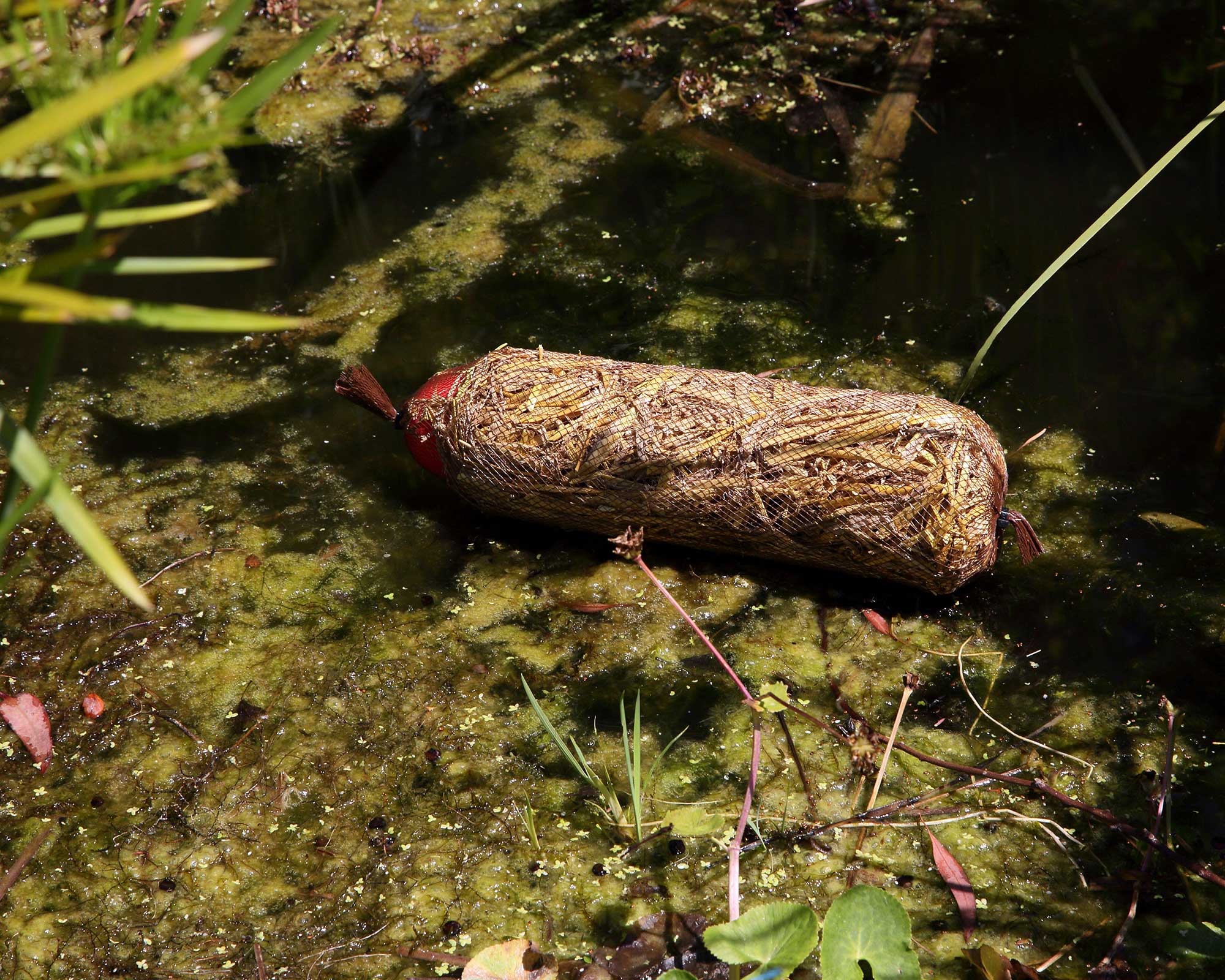
A bundle of barley straw being used to combat algae
When is the best time to clean a pond?
A light pond clean-up as part of your spring garden jobs can be very beneficial, which is when fish become more active. Maidenhead Aquatics recommends 'a quick check of the filter, removal of any floating debris, the thinning out of pond plants, and the addition of a pond supplement to give things a boost.' However, be careful not to disturb any frogspawn – in the UK this can appear as early as late January through to March.
Carry out the more intensive clean during mid-late fall. By this point, amphibians will have finished breeding and insects such as dragonflies will have grown large enough to move out of harm's way. Also, most deciduous trees will have dropped their leaves, so it's a good idea to scoop these out before they begin to decay.

Carry out your pond's deep clean in fall
How often should you change the water in your pond?
As the experts at Pond Academy explain, removing up to half of your pond water can be beneficial. This is especially the case if your pond is full of fish, which can result in too much waste building up and overwhelming the levels of good bacteria.
You won't need to drain the entire pond, they stress, but a small change may help to improve water quality. Just be sure to refill it with dechlorinated water to maintain good bacteria, microorganisms, and the health of your fish.
If you do need to totally drain your pond – for instance, if you need to repair your liner or are restructuring the design – then do this in late fall. You'll need to prepare a holding tank for fish and deep water plants, says the RHS. The easiest way is to use a pump, and gently transfer the fish to the holding tank as they become visible. When you fill it back up, ideally use rainwater. Bear in mind that it can take several months to build your pond's ecosystem back up again after a full drainage.

The garden was always a big part of Holly's life growing up, as was the surrounding New Forest where she lived. Her appreciation for the great outdoors has only grown since then. She's been an allotment keeper, a professional gardener, and a botanical illustrator – plants are her passion.
